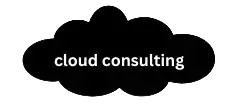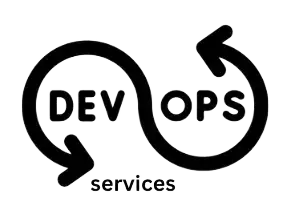Enterprise Resource Planning,What is ERP,ERP Solution India,ERP Software Solution
Enterprise Resource Planning - India based erp consultant provides useful information on enterprise resource planning, erp software solution, erp software development. Also providing other outsourcing services like web designing and development, web software development, web hosting and search engine optimization.
Enterprise Resource Planning(ERP)
ERP denotes Enterprise Resource Planning that is a technique of using computer machinery to connect diverse functions like accounting, inventory control, and human resources of any company as a whole. ERP is planned to aid information sharing, business planning, and decision making on a broad business basis. Emerging from the manufacturing industry, ERP entails the use of packaged software rather than proprietary software written by or for one customer. ERP elements may be able to fetch into any organization's own software with varying degrees of attempt, and, depending on the software, ERP modules may be adjustable via the vendor's proprietary tools as well as proprietary or standard programming languages.
An ERP system can include software for manufacturing, order entry, accounts receivable and payable, general ledger, purchasing, warehousing, transportation and human resources. The major ERP vendors are SAP, PeopleSoft, Oracle, Baan and J.D. Edwards. ERPs incorporate all data and processes of any business firm into a unified system. A typical ERP system will use several composite of computer software and hardware to achieve the blend. A sole factor of most ERP systems is the use of a cohesive database to store data for the diverse system elements.
Origin of the phrase
The phrase ERP formerly obscure systems intended to plan the use of enterprise-wide resources. Though the acronym ERP derived from the manufacturing environment, but nowadays it has much broader scope in the today's business era. ERP systems usually try to meet entire fundamental task of an organization, despite of the organization's business or charter. Corporate, non-profit firms, non-governmental organizations, governments, and other large entities employ ERP systems.
Besides these, an ERP system would only need to provide functionality in a single package that would generally be covered by two or more systems. Precisely, a software package that offers both payroll and accounting jobs would be measured an ERP software package.
Even though, this word is characteristically reticent for bigger and gigantic applications. The prologue of an ERP system to swap two or more independent applications purge the need for external fetches earlier needed between systems, and granted additional benefits that range from equivalence and lower continuation to ease or boost reporting capabilities like all data is usually kept in a single database. The ERP that earlier used as stand-alone applications include: Manufacturing, Supply Chain, Financials, Customer Relationship Management (CRM), Human Resources, Warehouse Management and Decision Support System.
Synopsis
Some business groups normally those with ample in-house IT skills to amalgamate multiple software products, select to execute only applicable part of an ERP system and develop an external boundary to other ERP or stand-alone systems for their other application requirements. This is widespread in the trade sector where even a mid-sized vendor will have a distinct Point-of-Sale (POS) product and financials application, then a series of specialized applications to handle business needs like warehouse management, staff management, merchandising and logistics.
Usually, ERP distributes a single database that contains all data including in it, the inclusion lists are:
Production Department
Engineering, Bills of Material, Scheduling, Capacity, Workflow Management, Quality Control, Cost Management, Manufacturing Process, Manufacturing Projects, Manufacturing Flow Supply Chain Management Inventory, Order Entry, Purchasing, Product Configurator, Supply Chain Planning, Supplier Scheduling, Inspection of goods, Claim Processing, Commission Calculation Financials General Ledger, Cash Management, Accounts Payable, Accounts Receivable, Fixed Assets Projects Costing, Billing, Time and Expense, Activity Management Human Resources Human Resources, Payroll, Training, Time & Attendance, Benefits Customer Relationship Management Sales and Marketing, Commissions, Service, Customer Contact and Call Center support Data Warehouse Several Self-Service interfaces for Customers, Suppliers, and Employees .
Enterprise Resource Planning is a phrase initially coined from manufacturing resource planning (MRP II) that pursued material requirements planning (MRP). MRP developed into ERP when transporting became crucial part of the software architecture and a company's aptitude planning activity also became an integral part of the standard software activity. ERP systems generally hold the manufacturing, logistics, distribution, and inventory, shipping, invoicing, and accounting for a company. Enterprise Resource Planning or ERP software can support to control a wide range of business activities, like sales, marketing, delivery, billing, production, inventory management, quality management, and human resource management.
ERPs are frequently mistakenly called back office systems signifying that customers and the general public are not directly indulge. This is distinguished with front office systems such as customer relationship management (CRM) systems, which deal directly with the customers, or the eBusiness systems such as eCommerce, eGovernment, eTelecom, and eFinance, or supplier relationship management (SRM) systems.
ERPs are cross-performer and business wide software. All handy departments that indulge in operations or production are included in one system. In addition to manufacturing, warehousing, logistics, and Information Technology, this would include accounting, human resources, marketing, and strategic management.
Before evaluation of ERP
Before evolving the concept of ERP systems, there were different departments within an organization like Human Resources (HR) department, the Payroll (PR) department, and the Financials department and each of them must had to own computer systems. The HR computer system (also called HRMS or HRIS) would usually contain information on the department, reporting structure, and personal details of employees. The PR department would generally calculate and store paycheck information. The Financials department would typically store financial transactions for the organization that means each system would have to trust on a set of common data to communicate with each other. For the HRIS to send salary information to the PR system, an employee number is essential to be allotted and the rest data between the two systems to precisely identify an employee. The Financials system was not interested in the employee level data, but only the payouts made by the PR systems like Tax payments to several authorities, payments for member of staff and so on that created complications e.g. a person could not be paid in the Payroll system without an employee number.
After that
After emerging the ERP software the trends become differently change. In this software ERP combined the data of formerly separate applications. This made the agony of keeping numbers in synchronization across multiple systems disappears. It standardized and reduced the number of software specialties needed within bigger business groups.
Best Practices
Best Practices were also a beneficial for implementing an ERP system. When user employ an ERP system, organizations basically had to choose between customizing the software and modifying their business processes to the "Best Practice" functionality delivered in the vanilla version of the software.
Generally, the delivery of best practice applies more usefully for bigger organizations and especially where there is conformity needs like IFRS, or where the process is commodity such as electronic funds transfer. This is due to the procedure of capturing and reporting legislative or commodity content that can be willingly codified within the ERP software, and then replicated with confidence across multiple businesses that have the same business requirement.
Where such an observance or commodity constraint does not emphasize the business process, it can be disputed that determining and applying a best practice actually erodes competitive advantage by homogenizing the business compared to everyone else in their industry sector.
Implementation
ERP application has been used in a wide range of business services that's why it covers most probably all enterprise business. To make capable for all enterprise business, it becomes very complex and mostly asks significant changes according to business requirement and business needs. Implementing ERP software is an extremely tough job and many times it proves cost effective if specialist ERP implementation consultants are used. The running and processing time of the ERP system depends upon the size of the business, the scope of the change and willingness of the customer to take ownership for the project. The crucial phase of any ERP implementation is that the company, which purchases the ERP product, takes ownership of the project. For implementing ERP systems, companies usually need the ERP vendor help or the third-party consulting companies for getting the services of Consulting, Customization and Support.
We request you to call us at +91 9313063554 or email us at [email protected] for you software development needs.







